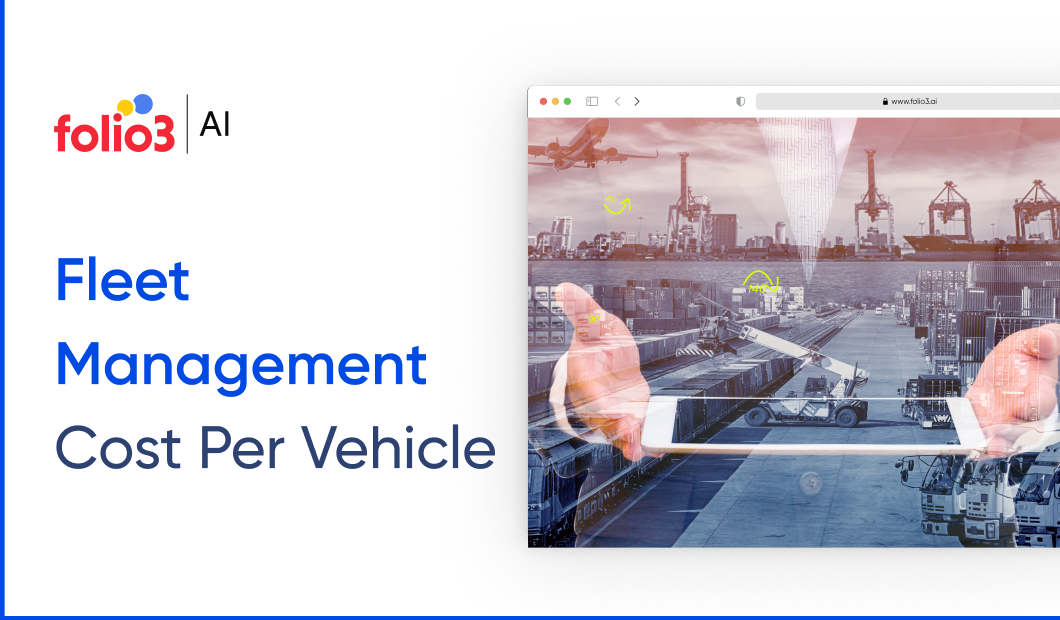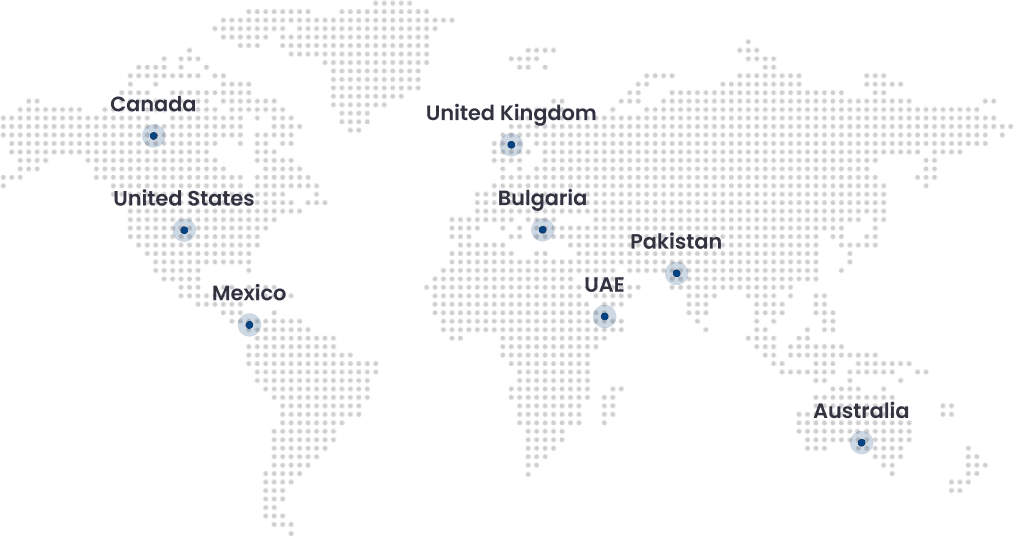Most companies’ fleet managers struggle to keep track of vehicles, whether they operate in logistics or provide services. Managing routes, monitoring driver behavior, ensuring timely maintenance, and keeping up with fuel expenses can quickly become overwhelming, especially without a centralized system to track the budget.
Fleet management helps simplify this by tracking real-time expenses and automating total cost of ownership (TCO) calculations. TCO includes all costs—from acquisition to maintenance and depreciation—helping fleet managers identify savings and make smarter decisions. It also provides a holistic financial view of data on fuel consumption, repair costs, insurance, and driver performance that was previously difficult to obtain.
By accurately monitoring fleet management cost per vehicle, managers gain complete visibility into every dollar spent. Such detailed insights improve budgeting accuracy and enhance overall fleet performance, ensuring each vehicle contributes positively to the company’s bottom line. Below, we have covered key components that transform fleet operations and boost return on investment.
What Is Fleet Management Cost per Vehicle?
Fleet Management Cost per Vehicle is the total amount your company spends to operate and maintain each vehicle in your fleet over a set period, usually monthly or annually. This figure combines all the direct and indirect costs involved in owning and running a vehicle, giving you a clear and measurable way to understand how each vehicle impacts your overall expenses.
Knowing this cost is crucial, especially if your business depends on a fleet for logistics, delivery, field services, or other operations. It helps you see exactly how much each vehicle costs. More importantly, it shows whether each vehicle provides value and contributes positively to your return on investment (ROI).
Why Does It Even Matter?
- Understanding the cost per vehicle helps you plan budgets and avoid surprise expenses.
- Comparing costs by vehicle, route, or driver shows where you can save money.
- This data helps you decide when to replace vehicles, lease or buy, and adjust fleet size.
- Tracking expenses closely ensures each vehicle adds to your profits.
- Clear cost insights highlight problems like high fuel use, repairs, or unsafe driving, allowing you to act quickly.
Breaking Down Fleet Cost per Vehicle
1. Acquisition Costs
This is the money you spend to buy or lease a vehicle for your fleet. On top of that, if you need to add special equipment or apply company branding, those costs also add up. These upfront expenses greatly affect how much money you need to start with and how long you plan to keep the vehicle. That’s why it’s essential to consider all these costs before deciding.
2. Depreciation
Every vehicle in your fleet loses value over time. By tracking this yearly drop in value—called depreciation—you can see how much your assets are really worth. This helps you decide the right time to sell or replace a vehicle, so you don’t face surprise losses and can get the most value out of your fleet.
3. Fuel Expenses
Fuel is one of the biggest day-to-day costs for your fleet. That’s why it’s important to keep an eye on how much your vehicles are using. Things like idling too long or harsh driving can waste fuel. By planning better routes or using electric vehicles, you can cut fuel use, lower costs, and make your fleet more eco-friendly.
4. Maintenance and Repairs
Regular maintenance helps your vehicles stay in good shape and avoid problems. But unexpected repairs disrupt your budget and operations. Using predictive maintenance tools that analyze vehicle data lets you schedule service proactively, reducing downtime and avoiding costly emergency fixes.
5. Insurance and Licensing
Commercial insurance protects your fleet from costly accidents and legal claims. The cost depends on the type of vehicles and your drivers’ records. You must also keep up with licenses, registrations, and other compliance fees to stay legal and avoid fines. Reviewing these costs regularly helps you stay in control and find ways to save.
6. Telematics and Fleet Software
Tools like GPS tracking and electronic logs show you where your vehicles are and how your drivers are behaving in real time. This helps improve safety, cut fuel costs, and stay compliant with industry rules. While the technology has an upfront cost, it quickly pays off by making your operations smoother and more efficient.
7. Driver Wages and Training
Driver pay and benefits make up a big part of your fleet costs. That’s why it’s smart to invest in training that improves safety and follows regulations. Skilled drivers use less fuel, avoid accidents, and help keep vehicles in better shape, saving you money in the long run.
8. Administrative and Overhead Costs
Running a fleet isn’t just about the vehicles—you also need to factor in the salaries of your fleet managers and support staff. Add in office costs and software fees, and overhead can add up quickly. But with the right tools and automation, you can cut these costs and run your fleet more efficiently.
How to Calculate Cost per Vehicle
Understand every expense in your fleet to optimize costs, improve efficiency, and effectively boost overall return on investment.
How to Reduce Fleet Cost per Vehicle
Once you understand your fleet management cost per vehicle, the next step is to reduce it without compromising performance. Here’s how fleet management helps in this.
1. Right-Sizing Your Fleet
Avoid keeping too many or underutilised vehicles. Analyse usage data to determine whether you need to scale up or down. A leaner, well-utilised fleet means less idle time and more savings.
2. Implementing Fuel Efficiency Programmes
Train drivers on fuel-saving practices like reducing idle time and easing acceleration. Consider upgrading to fuel-efficient or electric vehicles. Even small improvements in fuel use can significantly lower overall costs.
3. Leveraging Telematics and Data Analytics
Use fleet management software and telematics to gain insights into route efficiency, driver behaviour, and vehicle health. These tools enable you to make real-time decisions that reduce waste and optimise resource allocation.
4. Proactive Maintenance Scheduling
Preventive and predictive maintenance helps you avoid costly breakdowns. Set regular service intervals, monitor vehicle health through sensors, and address issues before they become emergencies.
5. Driver Behaviour Monitoring and Coaching
Poor driving habits like harsh braking, speeding, or idling increase fuel consumption and wear. Monitoring tools help you coach drivers towards safer and more efficient driving, which in turn lowers maintenance, fuel, and insurance costs.
Turning Cost Data into Strategic Advantage with the Right Fleet Management Partner
Reducing fleet costs per vehicle requires more than controlling expenses—it demands real-time visibility, data-driven insights, and efficient operational control. Incorporating folio3 AI fleet management solutions meticulously manages this complex budget.
Our AI Fleet management software offers telematics, AI-driven analytics, and predictive maintenance tools to simplify expense tracking and improve decision-making. These tools help fleet managers monitor driver behavior, optimize routes, automate cost calculations, and schedule maintenance proactively, all of which contribute to lowering overall costs and boosting fleet efficiency.
Choosing the right partner who offers comprehensive solutions tailored to your needs changes how you manage your fleet. It can help you gain better control over expenses while improving safety and compliance.
With the right solution and support, managing your fleet’s costs becomes a strategic advantage, enabling every vehicle to contribute positively to your business success.
Conclusion
Tracking and managing fleet cost per vehicle is essential for improving efficiency and maximizing ROI. By understanding every expense and selecting the right solution, fleet managers can make smarter decisions that save money and enhance performance. With the right strategies and partners, your fleet can become a powerful asset that drives your business forward.

Manahil Samuel holds a Bachelor’s in Computer Science and has worked on artificial intelligence and computer vision She skillfully combines her technical expertise with digital marketing strategies, utilizing AI-driven insights for precise and impactful content. Her work embodies a distinctive fusion of technology and storytelling, exemplifying her keen grasp of contemporary AI market standards.









